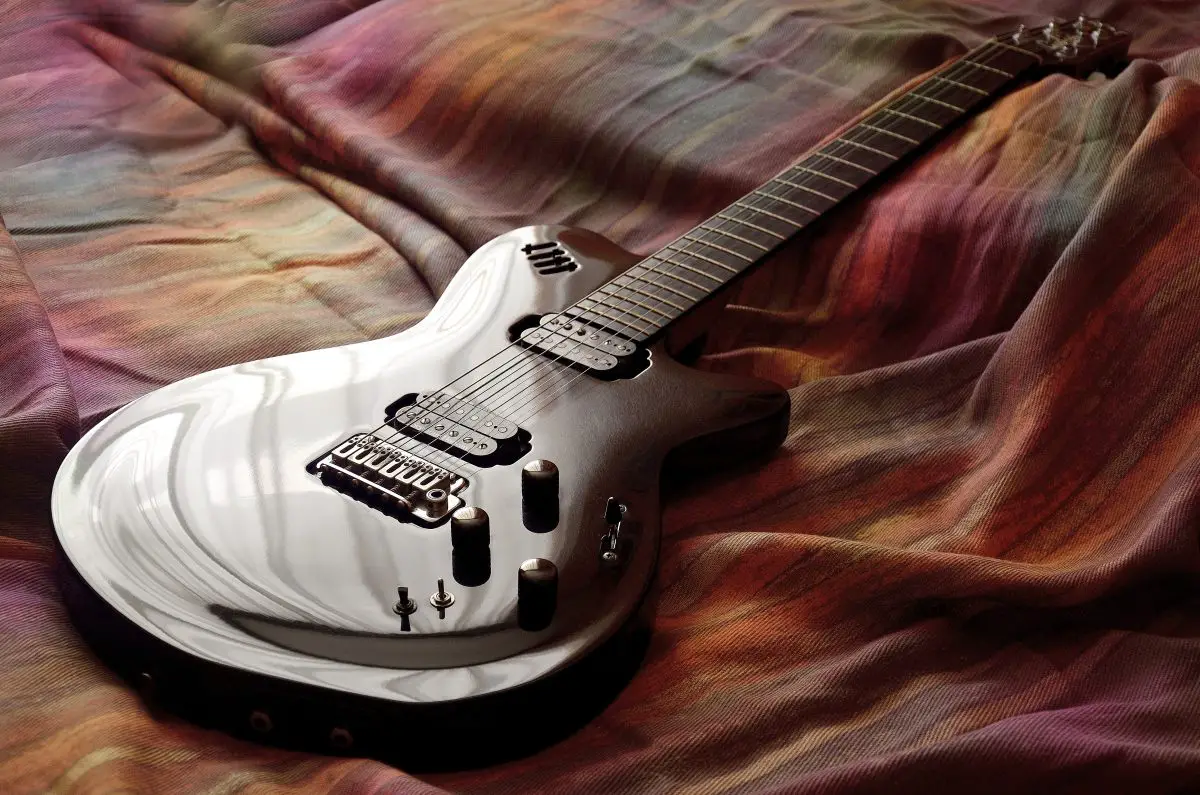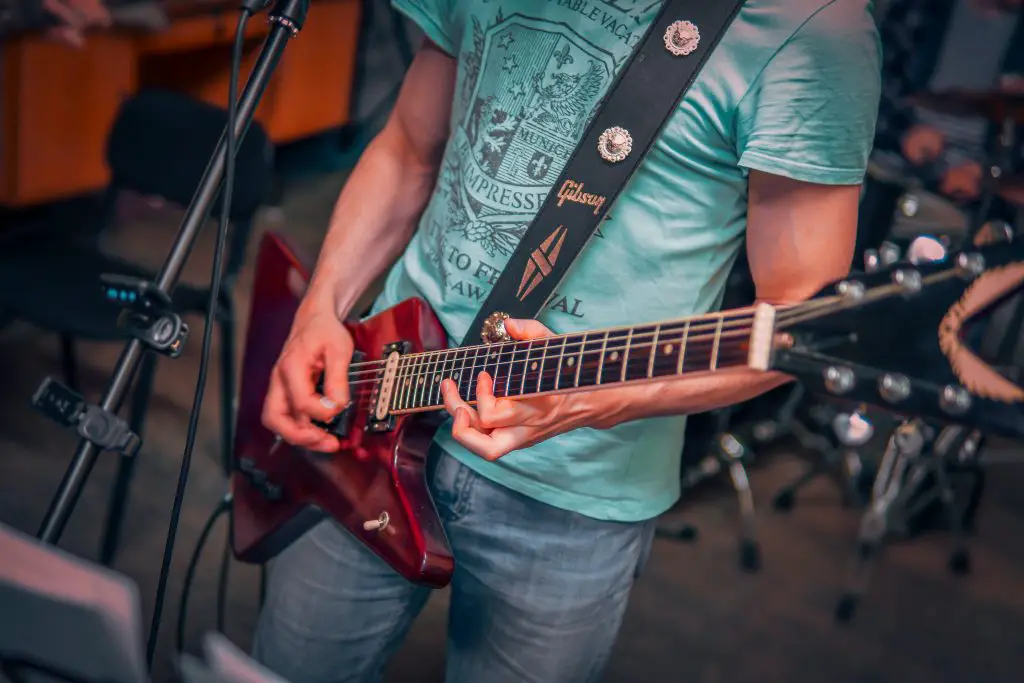Picture yourself at a live concert. As the spotlight falls on the guitarist, they strike a chord, and the sound that comes out is rich and powerful, captivating every ear in the audience. That distinct, full-bodied sound — that’s the magic of overdrive in guitar amplification. But what exactly is overdrive, and how does it add that raw, biting edge to the otherwise clean tone of a guitar? Let’s dive into the world of guitar amplification to find out.
What is overdrive in guitar amplification? Overdrive in guitar amplification is essentially a tonal effect that occurs when an amplifier is driven beyond its capacity to handle the signal it receives, producing a warm, saturated sound that’s typically associated with rock and blues genres.
What is overdrive in guitar amplification?
Overdrive is a form of audio signal processing used in guitar amplification to alter the tone of the instrument. It’s frequently associated with electric guitars, specifically in rock, blues, and many other genres of music. This effect is achieved by increasing the gain (volume level) of the amplifier to the point where the audio signal distorts, giving a warm, crunchy, or gritty tonal quality to the sound.

AKAI Professional MPK Mini MK3

AKAI Professional MPK Mini MK3
My first encounter with overdrive
I can still recall that heart-pounding thrill of the first time I cranked up an amplifier and stumbled onto overdrive. It was like discovering an entirely new language spoken in growls and grit, a secret handshake only the cool kids knew.
Research shows that the harmonic richness of an overdriven guitar can engage listeners on a deeper emotional level.
I was just fiddling around with the knobs on my amp, trying to find a sweet spot that could replicate the tone I’d heard in a classic rock track. Suddenly, I nudged the gain a little too far, and WHAM! My guitar, previously a polite companion, transformed into a roaring beast that sent shockwaves through my fingers and straight into my adrenaline-flooded veins.
That, my friends, was overdrive. The growl. The snarl. The roaring beast. And it’s not just a ‘happy accident.’ Research shows that the harmonic richness of an overdriven guitar can engage listeners on a deeper emotional level. So, next time you’re jamming, don’t be afraid to unleash your inner beast and crank that amp up. The garage awaits.
How does overdrive impact your guitar’s sound?
When you crank up the overdrive, you’re essentially turning your smooth, clear guitar sound into something rawer and edgier. Your guitar’s sound becomes louder and fuller, and it gets this gnarly character that can make even the simplest power chord sound like a rock god’s roar.
Think about it like adding a little spice to your favorite dish. You’ve got your basic guitar tone – that’s your dish. But sometimes, you want a little extra kick, a bit of a tang, something that gets your taste buds (or, in this case, your ears) tingling. Overdrive is that secret spice.
In blues and classic rock, a mild overdrive is often used to add a gritty and punchy character to the guitar tone, enhancing the expressive and emotional quality of the music. In heavier genres like hard rock and grunge music, a more intense overdrive creates a powerful, aggressive, and saturated tone, suitable for the high-energy and dramatic nature of these genres.
Just for kicks, here’s a little table of “Dos and Don’ts” when dealing with overdrive:
| Do | Don’t |
|---|---|
| Experiment with different levels of overdrive to find your unique sound | Crank the overdrive to the max all the time |
| Use overdrive to convey emotion in your music | Use overdrive as a crutch to mask poor technique |
| Listen to various genres and artists to understand how they utilize overdrive | Listen to various genres and artists to understand how they utilize overdrive. |
What’s the difference between overdrive and distortion?
Overdrive adds warmth, character, and a bit of a growl to your sound. On the flip side, audio distortion is more like dumping a whole lot of hot sauce on your dish. It saturates your sound to the point where it’s almost unrecognizable, creating a heavy, aggressive tone that screams ‘rock n roll.’

Let me paint you a picture: Remember the first time you heard the crunching power chords in AC/DC’s ‘Back in Black’? That’s overdrive. Now think about the scorching solos in Metallica’s ‘Enter Sandman.’ Now that is distortion.
Of course, there’s no ‘better’ or ‘worse’ here. Overdrive and distortion are just different tools in your sonic toolbox. Which one you use depends on the kind of vibe you’re going for. If you want a warm, bluesy tone, overdrive is your guy. If you’re looking to melt faces with a scorching rock solo, distortion’s got your back.
How can you create an overdrive effect?
First things first, you need an amplifier that’s got an overdrive feature. This is where the magic happens. When you crank up the gain on your amp, it can’t handle all that signal coming in and starts to clip it. This clipping is what produces the warm, saturated, growly sound we know and love as overdrive.
You start off with a clean signal, slowly turn up the gain, and feel that growl start to kick in. It’s all about finding that sweet spot where your sound goes from clean to just a tad dirty. But remember, it’s not all about cranking the gain up to eleven. Finding the right amount of overdrive is like seasoning a dish – you want just enough to enhance the flavor without overpowering it.
Advantages and disadvantages of using overdrive
Alright, we’ve been talking up overdrive a whole lot, but like any good thing, it’s got its ups and downs. It’s time to explore both sides of the coin and see what overdrive brings to the party and what it might take away. Let’s dive into the pros and cons, shall we?
Advantages of using overdrive
Here’s the scoop on why overdrive is like the secret sauce in your tonal recipe:
- Overdrive adds warmth and character to your sound, making it fuller and richer.
- It can help convey a wide range of emotions, from subtle melancholy to fiery rage.
- Overdrive can make even simple power chords sound impressive and full-bodied.
- It adds a bit of an edge to your sound, making it more exciting and engaging to listen to.
Disadvantages of using overdrive
Now, let’s flip the record and take a look at some potential downsides to using overdrive:
- Overusing overdrive can make your sound muddy and indistinct.
- It can mask the nuances of your playing, making everything sound a bit the same.
- If used excessively, overdrive can lead to ear fatigue for both the player and the listener.
- It’s not suitable for all types of music – some genres might call for a cleaner tone.
If you want even more tips and insights, watch this video called “EFFECTS 101: Overdrive“ from the rolandmedia YouTube channel.
Frequently asked questions (FAQ)
Do you still have questions about overdrive in guitar amplification? Below are some of the most commonly asked questions.
Can I use Overdrive on any type of guitar?
Yes, you can use an overdrive effect pedal with any type of guitar, including electric guitars, acoustic guitars with pickups, and even classical guitars with built-in pickups. Overdrive pedals are designed to simulate the natural sound of an overdriven tube amplifier, adding a warm and distorted tone to your guitar’s signal.
Does overdrive damage your amp?
Overdrive is all about saturating your sound, not frying your gear. As long as you’re not cranking everything up to the max all the time, your amp should be just fine.
How can you find the right level of overdrive for your playing style and genre?
Finding the right level of overdrive involves understanding your genre, starting with a clean guitar tone and slowly increasing the gain, experimenting with different levels of gain, adjusting other settings like volume, tone, and EQ, and testing your sound in the context of a backing track or band. The right level of overdrive enhances your playing without overpowering it and can change depending on the song or mood.
Conclusion
Remember, overdrive is like the salt of your guitar sound. Too little, and your sound might be a bit bland. Too much, and you risk overpowering all the other flavors. So, practice, experiment, and above all, listen to your ears. Got a burning question? Don’t be a stranger – drop me a line in the comments below. I read and reply to every comment.
And if this post hit the right note with you, don’t keep it to yourself – share it with a friend! Be sure to check out my blog for more tips, tricks, and sound advice on guitar amplification. Thanks for reading, and remember – keep it loud, keep it proud, and always rock on!
Key takeaways
This article covered the world of overdrive in guitar amplification. Here are some key takeaways:
- Overdrive is an effect that adds warmth, character, and a bit of a growl to your guitar sound.
- You can create overdrive in your music production by cranking up the gain on your amp. This causes the amp to clip the signal, creating that classic overdrive sound.
- While overdrive can add depth and character to your sound, it’s important not to overuse it, as it can make your sound muddy and indistinct.
- You can use Overdrive on any guitar, and it doesn’t damage your amp.















